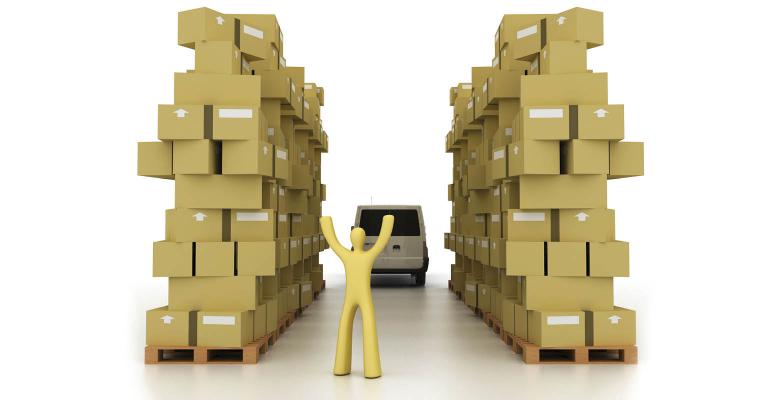On the surface, there’s nothing particularly exotic or sexy about the topic of package delivery. But actually, it’s the visible representation of the ongoing revolution in how people shop. All the news and noise about same-day and last-minute delivery and the blurring of lines between the retail and industrial real estate sectors—both driven by our ability to browse and click—culminate at your doorstep.
Or, for property managers, in our lobbies. And the influx of deliveries raises a new raft of problems, such as security, insurance, clutter and the all-important service to our residents and tenants.
Let’s put the trend into perspective. According to a recent CNBC article, online shopping has risen from about five percent of all retail in the 1990s to 12 percent today, representing some $60 billion in sales this past February alone.
For sure, much of the online commerce involves so-called omni-channel activity, such as the popular buy-online-pick-up-in-store strategy. But a closer look into the issue reveals the impact of pure-play web-to-doorstep shopping. According to tech website The Verge, Amazon spent 50 percent more on fulfillment in the third quarter this year than the same time last year. Meanwhile, shipping rivals FedEx and UPS are both ramping up their delivery schedules to meet the demand. In New York City alone, 1.5 million packages are delivered daily, and that’s before the holiday crunch.
Not surprisingly, many of the answers to the above issues come through technology. Many IREM members are already installing smart access-control systems as part of their upgrades to enhance service through tech applications.
As NREI reported last year, technologies are available that place “a touchscreen by the front door of the apartment property, replacing the old panel of doorbell buttons for the existing intercom system. Using the touchscreen, delivery people or guests can follow the prompts to identify themselves and the apartment they’re visiting. A camera records a short video of the visitor and immediately sends a notification to the smartphone of the apartment resident, who can respond to let the visitor into the property.”
If no one’s home, there are also a variety of storage systems that assist managers and occupants in the final steps of delivery, and these systems can range in their intelligence from simple lockers to full-blown smart systems that offer, in the words of one provider, “Data-rich reports, delivery history, and security information through an intuitive dashboard.” There is certainly no shortage of product options, as a quick Google search will reveal.
The challenge there, of course, comes in the availability of space. Depending on the size of the property and the anticipated rise in deliveries, a renovation might very well be in your property’s future, a costly, but increasingly necessary step.
There are, naturally, other issues that impact both commercial and multifamily properties in regard to package delivery. In a detailed article in NREI, attorney Steven P. Katkov enumerates such concerns as: wear and tear on the premises, the need for larger security deposits, and liability insurance carried by the tenant or resident. These are issues that not only can be, but must be, included in the leasing document.
He ends his thoughts with a warning: “Landlords and property owners should be aware of the potential legal considerations of these pick-up points, and these considerations should be reflected in the leasing, zoning and insurance of the property.”
I prefer to think of this less as a warning and more of as sound and practical advice for property managers as we watch the nature of package delivery change—and with it, the changing nature of service to our residents and tenants.
In addition to her role as 2020 president of the Institute of Real Estate Management, Cheryl Gray, CPM, serves as the head of special projects and operational excellence at QuadReal Property Group in Toronto. She’s IREM’s first international president.





